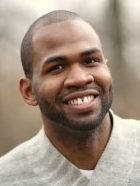
A few weeks ago, I stood together with some friends on Smith Street in front of Bar Great Harry. In light of social distancing requirements, we were only able to drink outside on the sidewalk, a new and unusual experience for any New Yorker. Still, it had been months since I had been able to enjoy draft beer with friends and, in that moment, I was just happy to be there.
The fun stopped when an imposing NYPD SUV pulled up across the street, with a clear line of site to our very public celebration. Open containers, for many years, has been the leading cause of criminal summonses in New York City. The police were even known to summon residents who were drinking on their own stoops, or carrying empty cups that simply smelled like alcohol.
“Don’t worry,” one of my white friends insisted, everything was different now, and the police wouldn’t care. After all, everyone was doing it.
Sure enough, the police walked right past us with only a passing nod of acknowledgement. They quickly moved about their business seemingly without noticing that we were flagrantly violating the law.
Since that time, similar scenes have played out across the city. New Yorkers, by the tens of thousands, are drinking outside each day and the police, having sensed the reality of the post-covid landscape, have looked the other way.
I really enjoy the New Orleanification of the five boroughs, but I’ll never quite be comfortable with the legal gray zone that has produced it. There was never any announcement or official acknowledgement — one day everyone just decided it was OK.
I dread the day a police officer decides that it’s not OK for me.
I dread the notion of continually looking over my shoulder, wondering if the next cop meandering nearby will capriciously re-discover the illegality of outdoor drinking.
I dread having to explain to an officer why it’s OK to break a law that everyone else is flagrantly breaking.
Many Black and brown New Yorkers are familiar with this feeling, and for good reason; police have shown a pervasive and pronounced bias when it comes to enforcement of obsolete and commonly disregarded rules.
For years, the NYPD has used the city’s public drinking laws as a simple pretext for the harassment of communities of color. Of the 15 city police precincts that wrote the most summonses for open-containers in 2010, 12 were located in communities of color. A separate Brooklyn study found that 85 percent of open container citations in that borough were given to Black and brown residents, and only 4 percent to whites.
There are so many other examples.
A 2018 New York Times study found that Black and Hispanic New Yorkers were eight times more likely than white people to be charged with low level pot possession, even when numerous studies have found parity across demographics in marijuana consumption. Last year, 90 percent of “jaywalking” and 86 percent of “biking on sidewalk” tickets were issued to Black and brown New Yorkers, as Streetsblog reported.
The list goes on; this is the heart of systemic racism and disenfranchisement in New York’s on-street law enforcement paradigm. Use “broken windows” policing tactics to instill fear and terror in minority communities, and hope that people are too frightened to commit crime.
The savvy can see what will happen here.
Those with fair skin in more affluent ZIP codes will continue to drink with their friends in the streets, while minorities will be subject to arbitrary harassment and summonses for doing the same. Even though public drinking was decriminalized in 2016, people of color might see a quick trip to the clink if they do not have a valid ID or if officers decide that their tone was pleasant enough.
Some of the most unfortunate may even end up like Eric Garner, (accused of selling illegal cigarettes), George Floyd, (accused of using a counterfeit $20 bill) or Rayshard Brooks (sleeping in his car).
The City Council must act quickly to prevent this dystopian reality from ever taking shape in Gotham.
In the short term, legislators should issue a blanket moratorium on the city’s “open-container” laws for the duration of the pandemic. This would completely halt all enforcement for a period of time until a more permanent solution can be devised, and would allow New Yorkers of all colors and creeds to enjoy their spirits in peace and without fear, in public, on the streets.
In the coming years, though, we will need to have a real conversation about the need for such laws to begin with. Open container laws were already completely ineffective at preventing the quality-of-life violations such as public urination and disorderly conduct. If anything, these regulations were more successful at discouraging outdoor socializing and gatherings, and may have actually hurt bars and restaurants without large indoor spaces. The overwhelming bramble of statistics, which place these ineffectual ordinances squarely at the center of the NYPD’s sprawling web of systemic racism, should be the final, and most damning, straw.
Instead, lawmakers should embrace more targeted, non-criminal, legislation that specifically discourages some of the quality-of-life offenses that public drinking was once thought to encourage. This careful approach will prevent undue arbitrary enforcement and will deliver safer and more lively streets for all.
How can anyone say no to that?
Shabazz Stuart is the founder and CEO of Oonee. You can follow him on Twitter @shabazzstuart.






